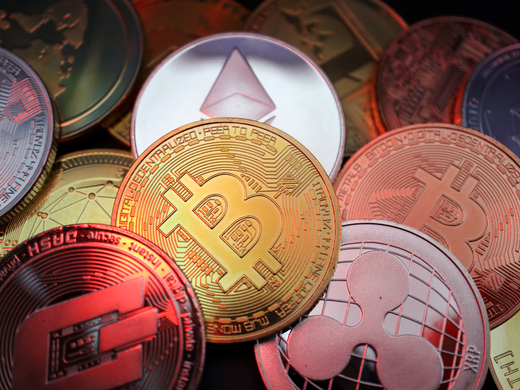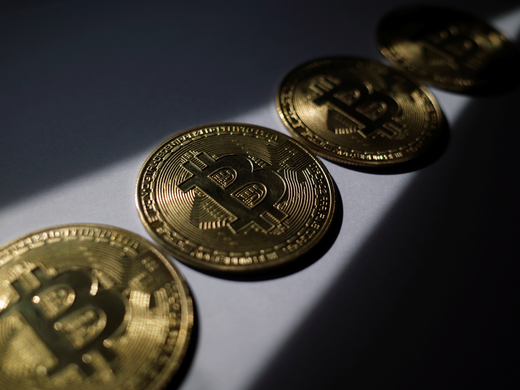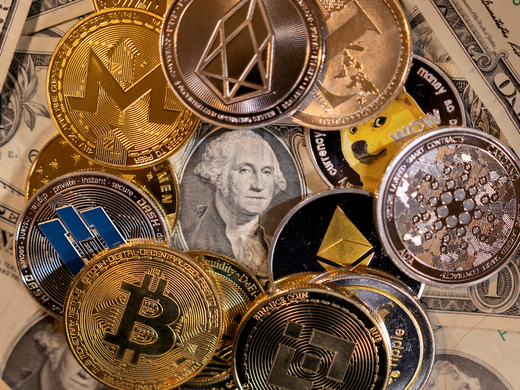On a warm November morning in Nassau, capital of the Bahamas, I walked for more than an hour along glorious stretches of beach and stopped for lunch at a health food restaurant called NRG, where I enjoyed a superfood salad and smoothie. Unremarkable as that may sound, the noteworthy point was how I paid: I used a newfangled form of money called the Sand Dollar, which involved pointing my mobile phone at a QR (quick response) code, entering the amount of the bill and tapping “confirm.”
The Sand Dollar, which was launched in October 2020, is the world’s first central bank digital currency (CBDC). Often confused with cryptocurrency, it is different in a crucial respect — it is government-backed money, legally an obligation of the Central Bank of the Bahamas, just as Bahamian dollar bills and coins are. Paying with Sand Dollars is the same as paying with cash in Bahamian dollars; although the transaction is in cyberspace, payment goes directly to the recipient’s digital wallet — it doesn’t go through a bank, credit card or other intermediary.
But as I found during my visit, paying with Sand Dollars can be challenging, because hardly any Bahamians use them and very few merchants accept them. I took the long stroll to NRG only because the central bank told me Sand Dollars can be used for payment there. In just about every other place where I needed to pay for something — restaurants, shops, hotels — Sand Dollars were refused, and some people knew little or nothing about the digital currency. “Isn’t that like crypto?” asked the feisty taxi driver who picked me up at the airport. After I explained the government’s role, she became even more dismissive. “Thieves and crooks!”
My experience is borne out by statistics showing that Sand Dollars account for less than one-tenth of one percent of the money in circulation in the Bahamas. The situation is similar in several of the handful of other countries that have issued CBDCs. In Nigeria, for example, the eNaira recently marked its one-year anniversary with the authorities so desperate to encourage its use that they offered drivers of three-wheeler taxis a five-percent bonus for taking it.
The limited uptake of the Sand Dollar merits consideration as debate heats up over whether CBDCs should be issued in countries such as Canada and the United States. On one side of the debate are CBDC advocates warning that since China has issued an official digital currency — known variously as the digital renminbi, digital yuan or e-CNY — Western democracies had better match it, lest the e-CNY become so widely used around the world as to facilitate the transmission of sensitive personal data back to Beijing. On the other side are critics fretting that once CBDCs become the wave of the future, they will greatly enhance the ability of all governments — not just China’s — to spy on and coerce the citizenry into submission.
One key aim was financial inclusion; the country is an archipelago where about 20 percent of the population lacks bank accounts, especially in some of the more remote islands.
The Sand Dollar’s performance to date suggests that those taking such extreme positions are probably going overboard. There are many good reasons for issuing a CBDC, and many good reasons against. But both proponents and opponents would be well advised to consider the evidence from the country where a CBDC has been in existence the longest. At the very least, the Bahamian experience raises the question: What happens if they, too, create a CBDC but get no takers? Proponents, then, need to come up with much better arguments than “other countries are doing it, so we must too.” And opponents, who have raised many valid concerns about privacy, ought to dial down their most dire predictions of a dystopian future.
The inspiration for the Sand Dollar came from John Rolle, governor of the Central Bank of the Bahamas, who had sound rationales for it. One key aim was financial inclusion; the country is an archipelago where about 20 percent of the population lacks bank accounts, especially in some of the more remote islands, in part because banks are reluctant to open branches there. A related goal was monetary “resilience.” Hurricanes often inflict devastation that disrupts the financial system (a recent example being Hurricane Dorian in 2019, which knocked out electric power and flattened bank branches, leaving thousands of people unable to access money for lengthy periods).
With technical assistance from the International Monetary Fund, Rolle and his colleagues carefully designed the Sand Dollar to avoid some of the potential problems that concerned CBDC critics. An ill-thought-out CBDC could exacerbate a financial crisis, for example, if people pulled their deposits out of banks and transferred it digitally to government-backed money. Moreover, it was important that the authorities balance the need to prevent money laundering and other illicit uses of funds against the need to avoid unreasonable government surveillance and intrusion into people’s private financial affairs.
With those concerns in mind, holders of Sand Dollars receive no interest — thereby minimizing competition with bank deposits — and are limited in the amounts they can hold and use. A person can hold up to $500 at a time in a digital wallet, and transact up to $1,500 per month, without providing identification or linking the wallet to a bank account. (One way to do so is to buy Sand Dollars at kiosks, using cash.) People wishing to hold larger amounts in their wallets, up to $8,000, must comply with know-your-customer rules by presenting government-issued identification or linking their wallets to bank accounts.
Rolle contends that the Sand Dollar is “still in the very early stages.” It’s only fair to acknowledge that the COVID-19 pandemic set back the plans for central bank personnel to campaign in outer islands to encourage people to use the currency. Promotion efforts are being intensified, such as a recent “Jollification” festival in Nassau where users of Sand Dollars were allowed to skip long entrance lines and pay reduced entrance fees.
But one major hoped-for feature — offline payment functionality — has failed to materialize because of technical problems. The ability to transact offline would greatly enhance the currency’s appeal for people who are most at risk of hurricane devastation. The central bank is trying to devise a solution, but unsuccessfully so far.
Given more time, merchants may come to appreciate the benefits of accepting Sand Dollars because they don’t have to pay fees as they do when receiving payment by credit cards. Dawn Sands, the owner of NRG, is enthusiastic about the currency for that reason. “That’s a huge deal,” says Sands, who estimates that fees eat up almost three percent of her current sales by credit card. “The thing is, I don’t know how long they [the central bank] will be able to keep from charging a fee. Eventually I think they’ll have to, because they employ a lot of people to manage it. But even if they charge one percent, that’s a lot better than what I have now.”
Sands would be delighted if more of her customers used Sand Dollars, but a worrisome new issue has arisen — the scandal that erupted over Bahamas-based FTX, the crypto exchange that went spectacularly bankrupt in mid-November. The fiasco has tarnished digital currencies in general, and financial governance in the Bahamas in particular, so the central bank will face even tougher skepticism from citizens who wonder why Sand Dollars are any more reliable than, say, bitcoin, Ether or Dogecoin.
“Because of crypto,” Sands laments, “there will have to be re-education, all over again.”



